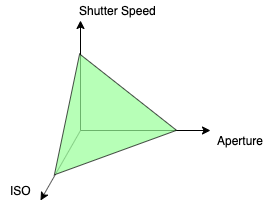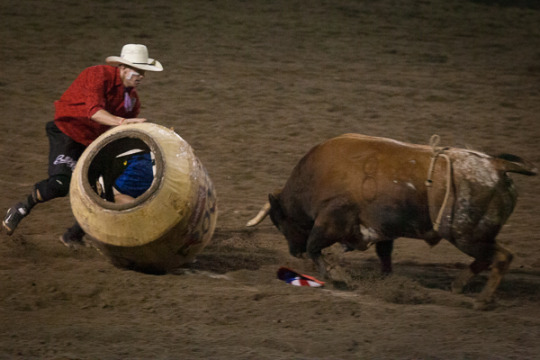Exposure Triangle
February 18th, 2020Back on January 14, 2020 I introduced the exposure triangle. Since then I’ve discussed the relationship between aperture and shutter speed; now I’ll expand the discussion to include ISO.

I mentioned that there are numerous aperture/shutter speed combinations that will produce a properly exposed image. Adding ISO to the mix allows even more combinations, as is represented by the green plane in the graphic above.
ISO settings have a direct and noticeable effect on the noise (or grainy-ness) of an image, therefore a specific ISO setting is most often chosen to adjust for the available light, with low ISO values being favored. I generally leave my ISO set on a low value, usually 100, and only increase it when needed to accommodate low light conditions.
This image from the Oakley Rodeo, which I presented last week, was shot at night using the stadium’s lights. I needed to use a relatively fast shutter speed (1/250s) to freeze the action and stabilize the camera. (I was shooting hand-held using an approximately 200mm image stabilized lens.) I wanted to stop down the aperture slightly (to f/6.7) to provide me with a decent depth of field. Therefore, to achieve proper exposure, I needed to boost the ISO significantly, to 12800.

(Canon 5DMII, EF70-300 DO @ 210mm, f/6.7, 1/250s, ISO 12800)
As an artist working in the photographic medium it is important to have a solid understanding the exposure triangle and the relationship between aperture, shutter speed and film speed (ISO).
